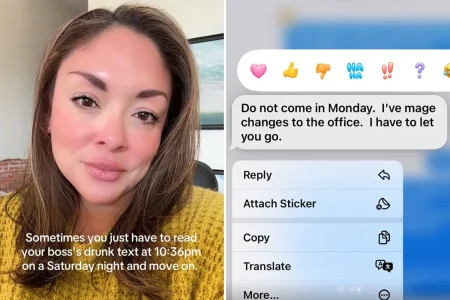The “Six Seven” Phenomenon: A Classroom Challenge and Teaching Opportunity
In a world where viral trends evolve faster than textbooks can be updated, the latest social media sensation making waves in Australian classrooms has nothing to do with complicated choreography or elaborate challenges. Instead, it revolves around two simple numbers: “six” and “seven.” This seemingly innocuous numeric pairing has become so embedded in Gen Alpha vocabulary that it rivals the ubiquity of “LOL” and “YOLO” from millennial culture. The peculiar aspect of this trend is its deliberate meaninglessness – a linguistic shrug that can represent something being “so-so,” reference someone tall, or simply exist as a punchline-free joke. Originating from a song by lesser-known artist Skrilla titled “Doot Doot (6 7),” which features the recurring lyric “6-7,” the phrase gained additional traction through its association with American basketball player LaMelo Ball, who stands at an impressive height of 6 feet 7 inches. The expression has since transcended its origins to become a cultural touchstone for younger generations, leaving many adults bewildered in its wake.
Teachers find themselves on the front lines of this numeric invasion, with classrooms across Australia echoing with spontaneous “six-seven” utterances that disrupt lessons and derail discussions. The phenomenon presents a unique classroom management challenge: how do educators respond to a trend that, by design, means nothing yet simultaneously means everything to their students? Some schools have attempted outright bans, hoping to stem the tide of this linguistic wildfire. However, the most interesting responses have come from teachers who’ve taken alternative approaches. As one parent of a fifth-grader shared, some educators have essentially “accepted defeat” by incorporating the phrase into their classroom management techniques – counting to five and pausing to let students enthusiastically complete the sequence with “six, seven,” followed by the expected laughter before redirecting attention back to the lesson. This strategic surrender acknowledges the unstoppable nature of youth culture while cleverly channeling its energy back toward educational purposes.
Creative educators have discovered that leaning into the trend rather than fighting against it offers unexpected teaching opportunities. A teacher from Sydney’s eastern suburbs revealed her playful approach: “I have said, ‘we are reading from page 6 and 7,’ and done the hand action, let everyone have a laugh, then returned to the task.” This momentary acknowledgment satisfies students’ desire for connection with their cultural touchstones while maintaining classroom focus. Taking the integration even further, she developed an educational challenge that transforms the trend into a learning tool: “I have organised a little writing challenge for the last day of school. In 6-7 minutes, write an explanation of what 6-7 means, how it originated and how it is used. You must write it in 67 words. No more, no less.” This brilliant adaptation turns a potential classroom disruption into an exercise that builds precision writing skills, research abilities, and cultural analysis – all while honoring rather than dismissing students’ interests.
Not all educators have found the balance between accommodation and boundaries. Another New South Wales teacher initially attempted to embrace the trend with humor in her mathematics classroom, jokingly suggesting “67” as the answer to various questions. However, she eventually reached her limit and implemented a complete ban on the phrase after finding it contributed nothing substantive to classroom discourse. “It’s that whole thing of the brain rot. They can’t explain what it means,” she lamented, highlighting a common frustration among adults confronted with youth trends that seem deliberately void of meaning. Her experience represents the opposite end of the response spectrum – beginning with tolerance but ultimately concluding that some boundaries are necessary for maintaining educational standards and meaningful communication.
The “six-seven” phenomenon reflects a broader pattern in how youth culture operates, particularly in the social media age. Young people have always developed insider language that excludes adults, but modern technology accelerates both the spread and obsolescence of these linguistic markers. What makes “six-seven” particularly interesting is its deliberate ambiguity – it’s a cultural signifier whose primary purpose seems to be creating in-group recognition rather than conveying specific meaning. This characteristic makes it simultaneously more frustrating for adults to comprehend and more powerful as a bonding mechanism among young people. The phrase functions almost like a password that identifies members of the same generational cohort, much in the way that earlier generations had their own seemingly nonsensical expressions that baffled their elders.
For parents and educators watching this trend unfold, there’s a bittersweet recognition that we’ve officially entered the “back in my day” generation – that moment when youth culture becomes something we observe rather than participate in. Yet the most successful responses to the “six-seven” trend demonstrate that the generation gap need not be an unbridgeable chasm. Teachers who find ways to acknowledge, incorporate, and even harness these cultural phenomena create powerful learning connections with their students. While some trends may indeed represent “brain rot,” others offer unexpected educational opportunities when approached with creativity and openness. As one teacher demonstrated with her 67-word writing challenge, even the most seemingly vapid trend can be transformed into a tool for developing critical thinking skills. Perhaps that’s the ultimate lesson of “six-seven” – that meaning can be created even from meaninglessness when we approach youth culture with curiosity rather than dismissal.















